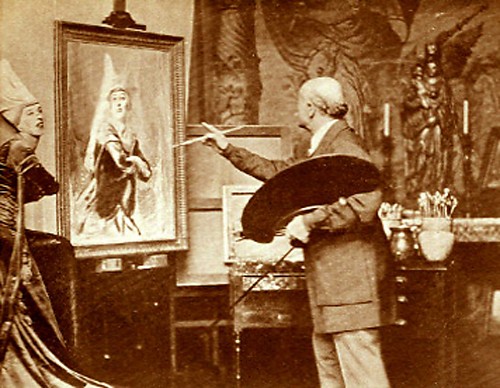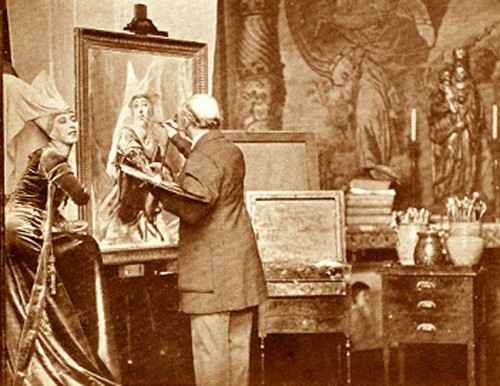|
11. Standing Back from the
Canvas

"When I stand back I am recording mentally
what I am
going to put on my canvas when I walk up to it
(below)."
Q: There is one question I have been waiting
to ask you—why do you take so much exercise
while you are painting? Why do you move backwards
and forwards so incessantly?
"Well, as you see, I set my canvas beside
my sitter, but what I put on that canvas I judge
from a certain distance. I must go fairly far
off to see the general effect of my subject as
a whole in all that rightness of relation upon
which I insist so much. When I stand back I am
recording mentally what I am going to put on my
canvas when I walk up to it."
Q: Really, one might say that you paint your
picture while you are away from your canvas.
"In my mind; yes, I do. What I put on with
my brush is considered and settled before I touch
the picture, so much so, indeed, that I do not
look at my sitter when I am close enough to put
that touch on the canvas. How do you think I could
judge the texture of any material if I were near
enough to it to put my hand upon it? I must be
sufficiently far off to appreciate properly the
characteristic tones and values by which varieties
of texture are made apparent."

|